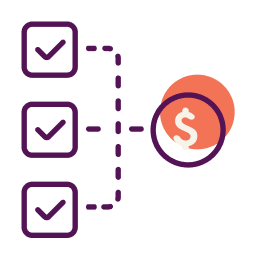Most small business owners are so focused on the day-to-day of running their businesses that they don’t think about how to take their business to the next level.
Stop for a moment and consider: how could you grow your business? How could you increase revenues, serve more customers, and create a more financially stable business?
Here are 9 ways to grow your business.
Do You Know Your Business Growth Potential?
When you run a new business, sometimes it feels like all you can do is stay afloat. But as entrepreneurs like you reach stability in cash flow, it’s time to consider business growth.
You may have established what you wanted your business to do in your initial business plan, but if it’s been a while since you updated it, this could be a great opportunity to reflect on what you want for your own business in the years to come and update that plan accordingly.
Imagine it’s a year from now. Five years from now. What does your business look like? How has it expanded? Do you have multiple locations? More employees? Maybe you envision having locations all over the globe or being a household name? Absolutely anything is possible.
Now imagine your business ten years from now. Maybe you want to hit a certain revenue goal or even step away from your day to day role. Maybe you’d like to get a foothold in a new industry. Or perhaps you want to have sold your business.
Dream a little, and write down your goals so you can start to create an action plan.
Developing a Growth Strategy
Keep your goals in mind as you explore the following methods for growing your small business.
1. Invest in Strategic Marketing
Having a marketing strategy isn’t a nice-to-have; it’s a must. Even if your business is booming today, you have to plant seeds for the future, and that means stepping up marketing efforts even when sales are steady.
Consider how you can best reach your target market through digital marketing. What do you know about your audience? Do they eagerly open your emails? Think about focusing on email marketing and build your email list.
Many businesses find social media is really helpful for boosting their online presence. If you can’t do it yourself, consider hiring an employee or social media marketing agency to manage your profiles on different social media platforms and perhaps try influencer marketing campaigns..
If you have a website, content marketing can be an excellent way to establish your brand’s expertise and be found online.
If you run a retail business, consider offering coupons or events to bring in new customers, and a loyalty program to reward customers who buy again..
A professional services business may need to invest in content marketing such as a blog, white papers, or webinars. And you may need to hire a salesperson to turn those leads into sales.
There are endless possibilities, and not all of these marketing strategies will apply to your business. Zero in on those activities that offer the best ROI for your business, and are within your budget.
Many small business owners try to do their own marketing, and sometimes that’s not the best solution. As a business owner, you probably have a lot of responsibilities on your plate, and if your marketing is at the end of the list, it’s not going to get done. You may need to hire a professional to help.
Whatever approach you choose, make sure you have a marketing budget. There are very few businesses that can expand without investing in some type of marketing.
2. Hire and Develop Talent
If you’ve been doing everything in your business, imagine how you could free up time with more people. Hiring an employee, contractor, or agency to work with customers, do marketing, or design your website can free you up to focus on what you do best: running your business.
Even if you can’t afford to hire a full-time employee, having part-time help or a freelancer can make a big difference.
3. Leverage Technology and Automation
You’ve heard the expression, “work smarter, not harder” and technology makes that more possible every day.
Look for tools that can automate repetitive tasks, such as scheduling appointments, sending invoices, or managing inventory. AI tools can help even the smallest business automate routine tasks.
If you aren’t already using one, a customer relationship management (CRM) system will help your business keep track of client interactions and sales leads.
For financial management, cloud-based accounting software can streamline bookkeeping and provide real-time insights into your business’s financial health.
And if you sell products, an e-commerce platform can help you reach more customers and manage online sales efficiently.
4. Expand Your Product and Service Offerings
Consider updating your business model to include new products that your customers crave. How do you know what they want? Ask them! There are lots of ways to do market research. Start by sending a survey to existing customers to take their pulse on whether they would be interested in additional products before making the investment.
If you sell women’s clothing, you could expand into accessories or outerwear. If you sell software, you could offer different tiers of service or a subscription to create more recurring revenue.
If you want to expand physical products, an inventory loan can help, and since the inventory acts as collateral, rates are generally low.
5. Focus on Customer Retention and Referrals
Focusing on keeping your existing customers happy is often great for your bottom line. Happy customers also tend to bring in more business through word-of-mouth.
In financial services, for example, a 5% increase in customer retention produces more than a 25% increase in profit according to Fred Reichheld, a fellow of Bain & Company, and author of Loyalty Rules! How Today’s Leaders Build Lasting Relationships (Harvard Business School Publishing).
So how do you boost customer retention? Here are a few ways to start:
- Provide excellent customer service consistently
- Ask for feedback on customer satisfaction and act on it
- Offer loyalty programs or repeat customer discounts
Consider reaching out to your top customers (for example, the top 10 or 10% of customers). Ask them what they love about your business and what you could improve. This insight can help you refine your offerings and attract more customers like them.
To encourage referrals:
- Create a referral program that rewards customers for bringing in new business
- Make it easy for satisfied customers to share their experiences online
- Thank customers personally when they refer business to you
Again, your existing customers can be your best ambassadors. By focusing on their needs and making them feel valued, you’re not just retaining business – you’re creating a network of supporters who can help your business grow.
6. Find New Customers
While retaining current customers is crucial, finding new customers helps your business grow. Here are some strategies to attract new customers:
Research new markets
- Identify customer groups similar to your current base to target online. (In digital marketing these are often called “lookalike audiences”.)
- Look for new markets where your products or services could solve problems.
Improve online marketing
- If you have a website, optimize it for search engines (SEO)
- Create valuable new content that attracts potential customers
Use targeted advertising
- Try social media ads to reach specific demographics
- Experiment with Google Ads for people searching for your products
Offer free trials or samples
- Let potential customers experience your product or service
- Follow up to convert trials into sales
Host events or webinars
- Showcase your expertise through workshops or online sessions
- Provide value to attract potential customers
Again, there are lots of ways you can go here. It may make sense to pick one new customer acquisition strategy to test. Set a goal for how many new customers you want to reach, and track your results. Adjust your approach based on what works best for your business.
7. Find New Sales Channels
If you’re selling in a bricks and mortar store, consider also selling online.
If you already have an ecommerce business, it may be worth testing new places to sell. Sites like Poshmark, Etsy, Amazon, Instagram, and TikTok may help you reach thousands of customers who might not otherwise find your website. You’ll need to make sure your pricing reflects the cut those sites take so you can continue to sell profitably.
Not all businesses can sell online, but you may be able to start the sales process online then bring in your team to close the sale.
Government contracting is also very lucrative for many business owners. You may be surprised to learn how much (and what) the government purchases.
Read: How to Get Government Contracts in Four Steps
8. Build Strategic Partnerships
Recently, I visited a bed and breakfast where the coffee was so delicious that I bought a bag of the locally roasted beans from the proprietor. That’s an example of strategic partnerships at work.
Forming partnerships with other businesses can help you reach new customers and grow faster. Start by identifying potential partners – businesses that serve your target market but don’t compete directly with you. Look for companies offering complementary products or services.
Once you’ve identified potential partners, focus on building relationships. Attend industry events or local business meetups, and connect on professional networks like LinkedIn. The biggest mistake you’ll make here is just thinking about what you need and not what they need. A one-sided relationship won’t last long.
Try this: List three businesses that serve your target market but aren’t direct competitors. Reach out to one this week with a simple partnership idea. Start small and see where it leads.
Strategic partnerships can open doors to new opportunities and help your business grow in ways you might not achieve alone. When done right, they are also fun! As you explore potential partnerships, keep your business goals in mind and focus on creating value for everyone involved.
9. Secure Appropriate Funding
Implementing some of these strategies is going to take money. Whether your business is a startup or well-established, you may not always have the cash on hand to take the next step.
That’s where small business loans and financing come in. You may be able to carefully and strategically borrow to invest in growth. Popular methods for financing these types of activities include:
- Working capital loan. These short-term loans can provide money for day-to-day needs.
- Business lines of credit. Having access to funding when you need it can make it easier to say yes to good opportunities when they arise.
- Business credit cards. Flexible and available to many business owners (including those with startups), a 0% intro APR business credit card may offer several months of interest-free financing.
- Business cash advances. These often fill the gap for businesses with a strong sales history that need very fast financing.
- Supplier financing. Your vendors may offer net-30 terms or something similar, allowing you to get the supplies you need to deliver to your customers.
Nav makes it easy to find financing for your small business.
Of course, you always want to carefully weigh the cost—and risk—of financing against the potential return to minimize the chance of getting your business into debt it can’t repay.
Invest in Your Business’ Future
When it comes to growing your business, you need to start somewhere. You need to think about what you want your business to look like in the future, then create a plan and timeline to get there.
Nav can help with tools and resources to grow your business. Nav’s financial health platform can help you track and improve credit and cash flow health alongside a marketplace of financial products for every stage of growth.
With Nav Prime, small businesses unlock the most comprehensive toolset to build business credit and manage their financial health.
FAQs
How can hiring help benefit business growth?
As a small business owner, it’s easy to fall into the trap of doing everything yourself. But there comes a point where no matter how much hard work you put in, you limit your growth.
Hiring help can free up your time to focus on high-level strategy and business development. It can also bring in new skills, increase productivity, and improve customer service. These benefits often lead to faster growth and new opportunities for your business.
When considering hiring, start by identifying the tasks that take up most of your time or the areas where you need expertise. You don’t always need to hire full-time employees right away. Consider part-time help, contractors, or freelancers to start. (Make sure you know the difference legally!)
While hiring might seem costly at first, the right help can pay for itself many times over by helping your business grow faster.
How do I make sure I’m not taking on too much debt?
Debt may help your business grow, but too much can put your company at risk. (If you’ve used personal debt or signed personal guarantees, your personal credit will be at risk too.)
Focus on how you’ll use any borrowed funds to generate more revenue. Make sure the potential return on investment for any loan outweighs its cost.
Read: How To Calculate Total Financing Costs and ROI
Before borrowing, look for ways to improve your cash flow. And when you do borrow, monitor your business credit scores, and cash flow.
How do I make sure I have enough cash flow for growth?
Cash flow is the money that flows in and out of your business, and healthy cash flow helps your business grow.
A good place to start is to monitor your cash flow. To do this, you’ll want to make sure you’re using a business bank account, and it helps to use a business credit card or business charge card as well.
Nav Cash Flow Health makes it easy to stay on top of your cash flow with insights and alerts.
This article was originally written on January 7, 2022 and updated on August 26, 2024.




Have at it! We'd love to hear from you and encourage a lively discussion among our users. Please help us keep our site clean and protect yourself. Refrain from posting overtly promotional content, and avoid disclosing personal information such as bank account or phone numbers.
Reviews Disclosure: The responses below are not provided or commissioned by the credit card, financing and service companies that appear on this site. Responses have not been reviewed, approved or otherwise endorsed by the credit card, financing and service companies and it is not their responsibility to ensure all posts and/or questions are answered.